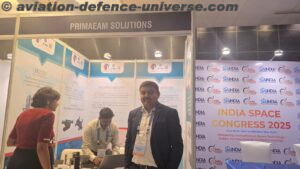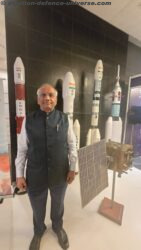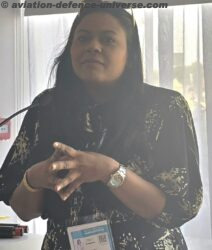
New Delhi / Boston. 12 July 2022. For some one who has more than 15 years of experience working in the field of robotics and automation in the United States and internationally, has published numerous papers in reputed journals including IEEE , has US patents under his name, in the course of his career he has developed several robotic algorithms for the United States Department of Defense and NASA, while working at various organizations and has wide ranging experience in obstacle avoidance and detection algorithms, computer vision, hardware/software integration, autonomous vehicle development and industrial robotics, Aditya Nawab , CEO Robosys has Atmanirbhar Bharat in his heart. Speaking with Aviation & Defence Universe (ADU) he explained that defence, homeland security and space applications will always be priority in his endeavour to match steps with Governement of India’s Make in India drive.
Very few know that he was one of the few engineers who received training to operate the Special Purpose Dextrous Manipulator (SPDM) at NASA JSC to help find solutions to the problems that astronauts face in space during teleoperations.
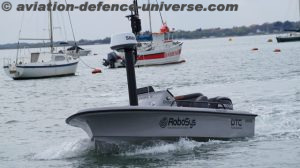
ADU. How is RoboSys matching steps with the Atmanirbhar Bharat drive of Government of India?
AN. Robosys is taking active measures to support the Atmanirbhar Bharat drive by engaging directly with the stakeholders – Indian Navy and defense forces to offer solutions that we have been delivering and developing for other players globally. Robosys is generating more awareness around the use of autonomous systems, around the concept of operations of how to use autonomous systems and how such systems can work around the edges and act as a significant force multiplier.
ADU. What is there on the platter for Indian Armed Forces by the company?
AN. Robosys has developed full stack autonomy solutions that can be adapted to air, sea, subsea and land platforms. Although our focus since the last decade has been in the maritime sector, our technology has emerged from developing autonomous ground vehicles. Our technology is very advanced – developed to navigate in dynamic, unmapped and unstructured environments, due to which, our solutions are able to support higher levels of autonomy.
ADU. Are some products already in use by the them?
AN. We are currently in discussions, and will be able to share some exciting news soon.
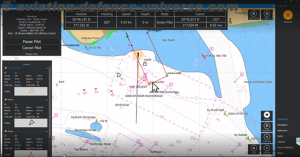
ADU. Has RoboSys developed manufacturing based joint ventures with Indian defence industry?
AN. We are currently speaking to various private and public sector defence contractors who are interested in collaborating with us and getting access to our technology. We feel that there is tremendous opportunity and an imminent need for companies to collaborate and deliver a total turnkey solutions. We are looking to collaborate with shipyards, boatbuilders and systems integrators.
ADU. What is the international reach of RoboSys in the robotics arena for defence and aerospace?
AN. We have supplied customers with our autonomous navigation systems in Europe, Middle East, Asia and North America. Lately, we were actively involved in helping shape regulations for Unmanned surface vessels. Our technology was also used in the world’s first fleet of stealth unmanned autonomous vessels and in the world’s first trials of autonomous vessels in the North Sea.
ADU. USVs are your prime products. Which other naval applications do you manufacture?
AN. We supply Voyager™ autonomous navigation systems with COLREGS compliant collision avoidance for use in vessels of all sizes. Vessels may be naval, but we are seeing a large interest in our Voyager™ systems for use in manned commercial vessels.
ADU. Is Roborat a part of both military and civilian applications?
AN. Roborat is a test and development vessel used to evaluate and trial our Voyager™ systems under real life conditions. While some development work can be done on a simulator, there is no substitute for being on a vessel, at sea, in a busy shipping lane, in call weathers not under the control of a simulator! Roborat is used for testing military as well as civilian applications.
ADU. Do you have existing solutions for land and air forces or do you tailor make them as per the customer’s requirement?
AN. While we offer standard Voyager™ solutions to our customers, a completly customised system can be created using different modules to fulfil the requirements of our customers, whether land, air or sea forces. Since we have developed a full stack autonomy algorithms, various modules can be leveraged to develop solutions for air and land systems. Also, our middleware can be directly leveraged for remotely piloted systems and our dynamic path planning algorithms can be used for autonomous systems and can work in the absence of a communications link.
ADU. What is the research focus of RoboSys?
AN. We are presently researching the subjects of ship recognition, navigation in a hostile sensor environment e.g. GPS, magnetic, radio and radar spoofing. Autonomous operation of Voyager™ with no or zero communications.
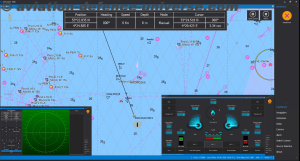
ADU. Is research inhouse or outsourced?
AN. Most of our research is inhouse, however we do cooperate with a number of international academic institutions and organisations in different continents on various projects.
ADU. Do you have products for home land security market?
AN. Yes, several! We deliver Voyager™ systems that convert existing vessels or new vessels to operate fully autonomously or remotely pilot an unmanned vessel. This is particularly practical where the vessel is carrying out boring, repetitive or dangerous surveillance or sentry duties. Our system can link vessels for coordinated fleet missions so that they may operate individually or together in a convoy or swarming formation.
The collision avoidance feature of our Voyager™ software does not only apply to unmanned vessels. Every week manned vessels are involved in collisions with static or dynamic objects including running aground – some estimates give human error as the main cause in 65% of the cases. Our Voyager™ navigation system is on duty 24/7 to give warning of impending hazards. If required it will navigate the vessel on to a safe track automatically without human intervention.
Removing the human crew on board a vessel is advantageous in different applications such as: firefighting with hazardous cargoes, mine hunting and unspecified military situations.
As told to Sangeeta Saxena




































